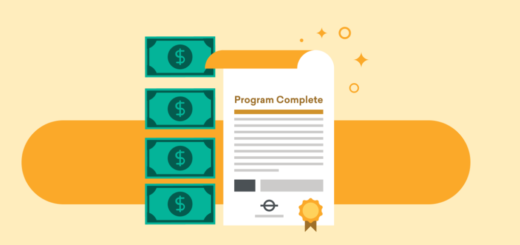8 Steps If Your Parents Won’t Help Pay for College
Our goal is to give you the tools and confidence you need to improve your finances. Although we receive compensation from our partner lenders, whom we will always identify, all opinions are our own. Credible Operations, Inc. NMLS # 1681276, is referred to here as “Credible.”
While many college students rely on their parents to help them pay for their education, not every parent is able to provide financial contributions toward school. However, dependent students will still need some important financial information from their parents to fill out the Free Application for Federal Student Aid (FAFSA) — the form used to apply for federal student aid.
If you’re a dependent student and your parents can’t pay for your education or won’t help you complete the FAFSA, don’t worry. There are other options that could help you cover your education costs without your parents’ support.
If you’re wondering how to pay for college without parents, follow these eight steps:
- Choose the right type of college for you
- Fill out the FAFSA
- Apply for scholarships and grants
- Take out federal student loans
- Find an income source that works with your schedule
- Consider taking out private student loans to fill the gaps
- Research tuition assistance programs
- See if tax credits could help
1. Choose the right type of college for you
Your overall education cost will vary depending on the type of school you choose as well as your program. Understanding how much you’ll generally pay for various schools can help you decide which kind is best suited to your goals and financial needs.
Here are the main school categories you’ll come across as well as their average costs:
- Certificate program: $20,031 per year for in-state students; $29,226 per year for out-of-state students
- Trade school: $33,000 (total)
- Public community college: $10,300 per year
- Public university : $25,487 per year for in-state students and $43,161 for per year for out-of-state students
- Private university (nonprofit): $53,217 per year
| Type of school | Typical program length | Average tuition per year | Average cost of attendance per year |
|---|---|---|---|
| Certificate program | 6 months to 1 year (depending on program) |
(for 1-year program) |
(for 1 year-program) |
| Trade school | 3 months to 1 year (depending on program) |
$3,600 to $14,500 (depending on school) |
$33,000 (total) |
| Public community college | 2 years |
|
$10,300 |
| Public university | 4 years |
|
|
| Private university (nonprofit) | 4 years | $35,807 | $53,217 |
You can see what your estimated monthly payment on a student loan will be using our student loan calculator below.
Enter your loan information to calculate how much you could pay
With a $ loan, you will pay $ monthly and a total of $ in interest over the life of your loan. You will pay a total of $ over the life of the loan, assuming you’re making full payments while in school.
2. Fill out the FAFSA
If you need to pay for college, your first step should be filling out the FAFSA. Your school will use your FAFSA information to determine what federal student loans and other federal financial aid you qualify for.
To complete the FAFSA, you’ll need to:
- Set up an FSA ID. Creating a Federal Student Aid (FSA) ID will let you sign the FAFSA electronically. To set this up, you’ll need your Social Security number, mobile phone number, and email address. If you’re a dependent student, your parent will also need to create an FSA ID of their own.
- Gather your documents. The FAFSA requires your personal and financial information — such as your Social Security number and most recent tax return — as well as each school you’d like to receive your results. Dependent students will also need to provide their parent’s financial information.
- Fill out the FAFSA. You can complete the FAFSA at StudentAid.gov. Once you’ve finished, sign and submit the form. Your information will then be sent to the schools you listed in your FAFSA.
- Get your financial aid award letter. Your school will send you a financial aid award letter detailing what federal student loans and other federal financial aid you qualify for. You can then choose which aid you’d like to accept.
Keep in mind that some aid is given on a first-come, first-served basis — so it’s a good idea to complete the FAFSA as early as possible, especially if you have high financial need.
Learn More: Colleges With the Best Return on Investment
3. Apply for scholarships and grants
Unlike student loans, college scholarships and grants don’t have to be repaid — which makes them a great way to pay for school. There’s no limit to how many scholarships and grants you can get, so it’s a good idea to apply for as many as you can.
Some organizations that might offer scholarships and grants include:
- Nonprofit organizations
- Local and national businesses
- Professional associations in your field
You could also qualify for school-based scholarships depending on your FAFSA results.
- Have a higher-than-average GPA
- Show merit in a specific educational area
- Are a certain ethnicity
- Have extreme financial need
- Plan to enter a specific program
- Have participated in volunteer work
The more specific the scholarship is, the greater your chance of being selected if you meet the requirements.
Check Out: How to Pay for College
4. Take out federal student loans
If you need to borrow for school, it’s usually best to start with federal student loans since they come with federal benefits and protections — such as access to income-driven repayment plans and student loan forgiveness programs.
Here are the three main types of federal student loans:
- Direct Subsidized Loans are available to undergraduate students with financial need. The government pays for the interest on these loans while you’re in school.
- Direct Unsubsidized Loans are available to undergraduate, graduate, and professional students, regardless of financial need. Unlike with subsidized loans, you’re responsible for all of the interest that accrues on unsubsidized loans.
- Direct PLUS Loans come in two categories: Grad PLUS Loans for students who want to pay for grad school and Parent PLUS Loans for parents who want to cover their child’s education costs. PLUS Loans usually come with higher interest rates than other federal loans. They also require a credit check.
Learn More: Every College You Might be Interested in Should be on Your FAFSA
5. Find an income source that works with your schedule
Another option to consider is finding a job that suits your school schedule and still allows you enough time to focus on your studies. For example, depending on your FAFSA information, you might be eligible to participate in the federal work-study program, which provides part-time jobs to undergraduate and graduate students with financial need.
Work-study jobs are typically located on campus. In other cases, you might work for a nonprofit organization or for-profit company that has partnered with your school.
In some cases, you might be able to manage a full-time job — but be sure that your employer understands your scheduling needs so you can focus on your education.
Check Out: 8 Part-Time Job Ideas for College Students
6. Consider taking out private student loans to fill the gaps
After you’ve exhausted your scholarship, grant, and federal student loan options and looked into job opportunities, private student loans could help fill any financial gaps left over. Note that these loans don’t come with federal protections. However, they do offer some benefits of their own — for example, you can apply at any time, and you might get more than you would with a federal loan.
You’ll typically need good to excellent credit to qualify for a private student loan. A good credit score is usually considered to be 700 or higher. There are also some lenders that offer student loans for bad credit, but these loans tend to have higher interest rates than good credit loans.
A cosigner can be anyone with good credit (such as a parent, another relative, or a trusted friend) who is willing to share responsibility for the loan. Just keep in mind that this means they’ll be on the hook if you can’t make your payments.
If you decide to take out a private student loan, be sure to shop around and consider as many lenders as possible to find the right loan for your needs. Credible makes this easy — you can compare your prequalified rates from our partner lenders in the table below in just two minutes.
| Lender | Fixed rates from (APR) | Variable rates from (APR) | Loan amounts | Loan terms (years) | Min. credit score |
|---|---|---|---|---|---|
 |
3.36%+ | 1.46%+ | $2,001 to $200,000 | 7 to 20 | 540 |
|
|||||
 |
3.23%+1 | N/A | $1,000 to $350,000 (depending on degree) | 5, 10, 15 | 720 |
|
|||||
 |
2.94%+2,3 |
0.94%+2,3 | $1,000 up to 100% of the school-certified cost of attendance | 5, 8, 10, 15 | Does not disclose |
|
|||||
 |
3.2%+ | 1.03%+ | $1,000 to $99,999 annually ($180,000 aggregate limit) |
7, 10, 15 | Does not disclose |
|
|||||
 |
3.02%+7 | 2.37%+7 | $1,000 to $200,000 | 7, 10, 15 | 750 |
|
|||||
 |
3.33%+8 | 1.69%+8 | $1,001 up to 100% of school certified cost of attendance | 5, 10, 15 | 670 |
|
|||||
 |
3.75%+ | N/A | $1,500 up to school’s certified cost of attendance less aid | 15 | 670 |
|
|||||
 |
3.5% – 12.6% APR9 | 1.13% – 11.23% APR9 | Up to 100% of the school-certified cost of attendance | 15 | Does not disclose |
|
|||||
| Compare private student loan rates without affecting your credit score. 100% free!Compare Private Loans Now |
|||||
7. Research tuition assistance programs
In some cases, your employer might be willing to cover some or all of your education costs through a tuition assistance program. These programs can help you offset the cost of college while also increasing your job skills and adding value for your employer.
Even if your employer doesn’t have a tuition assistance program in place, it doesn’t hurt to ask. They might be willing to provide funding if you can show them how it could benefit them by increasing your job skills.
Qualifying veterans of active duty (or qualifying family members) could also receive college aid through the Servicemen’s Readjustment Act of 1944 — also known as the G.I. Bill.
Check Out: 5 Steps to Take If You Can’t Afford College
8. See if tax credits could help
You might also be able to take advantage of tax credits designed to help students afford college. A tax credit offers a dollar-for-dollar reduction in the amount of income tax you owe. If the credit brings your owed taxes down to zero, some credits even provide you with a refund.
A couple of educational tax credits include the:
- American Opportunity Tax Credit: This refundable tax credit allows students to claim up to $2,500 per year in their first four years of pursuing a degree — meaning this credit can be claimed four times. If using this tax credit reduces your owed taxes to $0, the IRS will refund 40% of any remaining amount of the credit (up to $1,000).
- Lifetime Learning Tax Credit: This non-refundable tax credit allows you to claim 20% of the first $10,000 spent on qualified education expenses each year up to a maximum of $2,000. Since this credit is non-refundable, you won’t receive the credit back as a refund if your owed taxes are reduced to $0. There’s no limit to the number of years you can claim this credit.
What to do if your parents can’t or won’t fill out the FAFSA
Both schools and the federal government consider the cost of education to be primarily the family’s responsibility when it comes to dependent students. Unfortunately, if your parents can’t help you financially and also can’t or won’t fill out the FAFSA, then you won’t be able to apply for federal student aid as an independent student until you’re 24.
Here are a few common reasons why parents might refuse to fill out the FAFSA:
Privacy concerns
Some parents worry about providing their financial information to a third party. You can reassure them that their personal information is considered confidential and is protected by encryption when submitting the FAFSA online.
Additionally, once your school’s financial aid office has received your FAFSA information, it’s considered part of your student records and is protected by the Family Educational Rights and Privacy Act (FERPA). This means that the school won’t disclose your parent’s information to you or anyone else.
Divorce
Parents going through a difficult divorce are sometimes hesitant to provide their information for the FAFSA because they worry that the other spouse will learn about their financial situation. You can let your parents know that FERPA will protect them in most cases — the financial aid office will not disclose their information to the other spouse.
However, keep in mind that the school can be served by a court order to divulge this information for divorce proceedings. In this case, the school will alert the affected parent and won’t act until they’ve had a chance to fight the order.
Stepparents
If you have a stepparent, they could be reluctant to provide financial information on the FAFSA — for example, they might be concerned about privacy or being obligated to pay for your education. Or they might think the government won’t count their assets and income.
You can tell them that the government does consider this information from stepparents — however, this doesn’t obligate them to financially support you. Also let them know that filling out the FAFSA could provide you with need-based financial aid, which you won’t have access to without the form.
If this fails, the financial aid administrator could offer you a Direct Unsubsidized Loan as long as they verify that your parents have ended your financial support and refuse to file the FAFSA.
Are you considered a dependent or independent student when submitting your FAFSA?
To determine if you’re considered a dependent or an independent student, you’ll need to answer the following questions:
- Will you be age 24 or older as of January 1 of the school year for which you’re applying for financial aid?
- Are you married or separated but not divorced?
- Will you be working toward a master’s or doctorate degree?
- Do you have children who receive more than half of their financial support from you?
- Do you have dependents (other than children or a spouse) who live with you and receive more than half of their financial support from you?
- Are you currently serving on active duty in the U.S. armed forces?
- Are you a veteran?
- At any time since you turned age 13, were both your parents deceased, were you in foster care, or were you a dependent or ward of the court?
- Are you an emancipated minor?
- Are you an unaccompanied minor who is homeless or self-supporting and at risk of becoming homeless?
If you answer “no” to all of these questions, you’re considered a dependent student and must have your parents fill out the FAFSA to be eligible for federal student aid.
Learn More: Independent vs. Dependent Student: Which Are You?
What student loans are available without a parent’s participation?
If your parents refuse to fill out the FAFSA form, you might still be able to get a student loan. Here are the types of student loans available without parental participation:
- Direct Unsubsidized Loans: If your school’s financial aid administrator is able to verify that your parents won’t financially support you or fill out the FAFSA, they could offer you this kind of loan. Keep in mind that unlike with subsidized loans, you’re responsible for all of the interest that accrues on an unsubsidized loan.
- Private student loans: You don’t need your parents’ participation to apply for a student loan through a private lender — in most cases, you’ll just need to be at least 18 years old and be enrolled at an eligible school. Keep in mind that qualifying for a private loan could be difficult if you have poor credit or haven’t yet established a credit history. In this case, applying with a creditworthy cosigner could increase your approval chances.
If you decide to take out a private student loan, remember to consider as many lenders as you can to find the right loan for your situation. This is easy with Credible — you can compare your prequalified rates from multiple lenders in two minutes.
See Your Rates
Checking rates will not affect your credit




